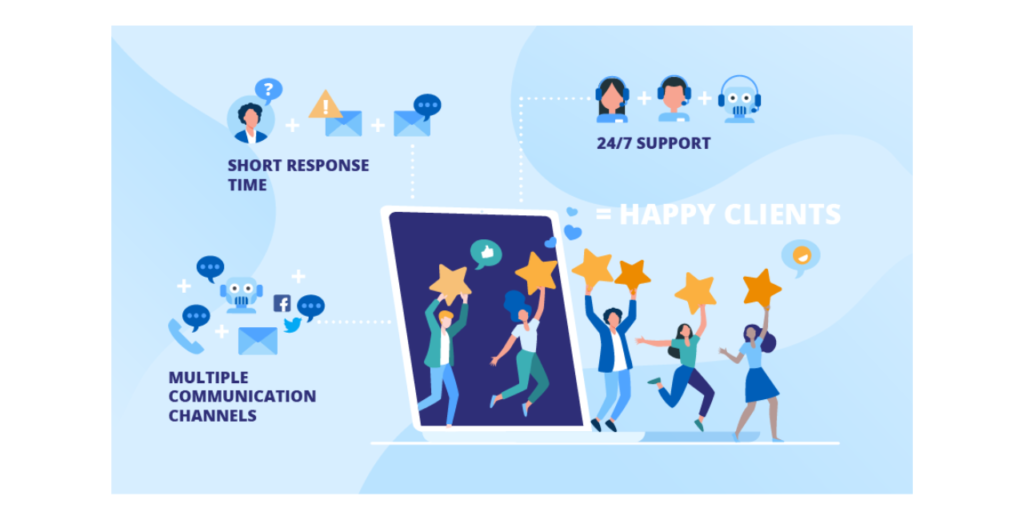Are you ready to unlock the secret to creating truly memorable eCommerce experiences? Personification has become a game-changer in the fast-paced world of online shopping, completely changing how companies interact with their clients. Generic interactions and one-size-fits-all strategies are a thing of the past. Customers today demand specialised services that address their particular preferences and interests. But what precisely does the power of personification in eCommerce mean, and how can businesses use it to build successful relationships with customers?
In this blog, we’ll set out on a journey to investigate the transformative potential of customisation in eCommerce. We’ll look into the strategies, tactics, and resources that organisations may use to give customers truly remarkable experiences. Here we will delve deep into the area of personification to show you how it can improve your eCommerce strategy and make you stand out.
So, if you’re ready to take your eCommerce Business to the next level and create unforgettable experiences for your customers, join us as we unveil the power of personification and discover the keys to creating truly memorable eCommerce experiences.
Importance of Customer Data in Personalization
In the realm of personalization, customer information is the key component of personalization and the priceless resource that powers specialized experiences. Every time a consumer interacts with your online store, you get vital data points that can help you understand their preferences, behaviors, and buying habits. Businesses may better understand their customers by utilizing the power of this data, enabling them to develop highly customized experiences that connect with each client on a unique level.
Customer data serves as the foundation for effective personalization strategies. Businesses can find patterns and trends that guide focused personalization efforts by gathering and analyzing data such as purchase history, browsing behavior, demographics, and even customer feedback. Leveraging customer data enables firms to deliver relevant recommendations, personalize marketing messages, and modify the overall user experience. This includes segmentation and consumer profiling as well as predictive analytics and machine learning algorithms.
Businesses may take advantage of a plethora of chances to establish closer connections, increase engagement, and foster customer loyalty by realizing the value of consumer data in personalization.
Customizing Product Recommendations and Suggestions
Delivering a tailored shopping experience to clients depends heavily on personalized product recommendations and suggestions. Businesses can produce recommendations that are in line with client preferences by studying their behavior, preferences, and purchasing history. These suggestions go beyond a one-size-fits-all strategy and provide clients interesting and useful choices that boost conversion rates.
Businesses can use sophisticated algorithms and machine learning approaches to successfully modify product recommendations. These algorithms filter through vast amounts of data to find trends and predict customer preferences with intelligence. Businesses can offer products that appeal to customers’ interests by learning about their individual tastes and preferences, which boosts engagement, sales, and customer satisfaction.
By focusing on customizing product recommendations and suggestions, businesses can develop individualized shopping experiences that make customers feel appreciated and understood. This degree of customization improves client engagement and promotes return trips, which eventually results in higher revenue and customer loyalty.
Personalizing Website Design and User Experience
Personalization goes beyond just suggesting products; it also applies to an eCommerce website’s layout and user interface. Businesses can design a seamless and pleasurable user experience by personalizing the website’s layout, graphics, and navigation based on user preferences. A customized website layout makes sure that every visitor feels catered to and can find what they’re searching for with ease, which boosts engagement and conversion rates.
To customize website design and the user experience, businesses can use consumer data and segmentation. Businesses can modify the website’s content and design to fit various consumer segments by studying user behavior, demographics, and purchase history. This can entail showing relevant product categories, emphasizing special deals or discounts, and offering simple navigation in line with user preferences. The objective is to design a website that is user-friendly, visually beautiful, and connects with each visitor personally.
By emphasizing on personalizing website design and customer experience, businesses may stand out in a crowded eCommerce market. A customized website encourages users to spend more time browsing and completing purchases while also improving user satisfaction and brand perception.
Crafting Personalized Marketing Campaigns
Crafting personalized marketing campaigns is a powerful strategy to engage customers and drive conversions. Businesses can develop tailored and relevant marketing messages that appeal to specific interests and preferences by utilizing client data. By delivering customized content that speaks specifically to each customer, personalized marketing efforts go beyond generic promotions, improving the likelihood of engagement and conversion.
To craft personalized marketing campaign, businesses can use customer segmentation and automation tools. They can build targeted marketing messages that appeal to diverse client groups by segmenting their customer base based on variables like demographics, purchase history, and browsing habits. Utilizing automation solutions, organizations may send these communications to customers across their preferred channels and at the ideal time, enhancing their effectiveness.
Personalized marketing campaigns give clients a more meaningful and tailored experience, encouraging a bond and loyalty. Businesses can create relationships with their customers and motivate them to do desired actions by providing pertinent offers, product recommendations, and personalized content. This will ultimately lead to increased sales and long-term client loyalty.
Improving Customer Support and Communication

Improving customer support and communication is crucial to create memorable eCommerce experiences. Businesses may increase customer satisfaction and forge long-lasting relationships by providing individualized and prompt help. Personalized customer care focuses on identifying unique needs and offering specialized solutions rather than just responding in a general way.
Businesses can use consumer data and make use of a variety of communication channels to enhance customer support and communication. They can identify frequent pain areas and proactively fix them by analyzing consumer interactions. This can involve integrating live chat assistance, customized email responses, or even artificial intelligence-powered chatbots. Making clients feel included, listened, and supported throughout their whole buying experience is vital.
By prioritizing personalized customer support and communication, businesses can stand out from the competition and encourage client loyalty. Customers are more inclined to trust a brand and buy from them again when they receive excellent customer service and have their questions answered efficiently. Additionally, the reputation and reliability of the company in the eCommerce industry can be further improved by the positive word-of-mouth spread by individualized assistance experiences.
Conclusion
The power of personalization in creating memorable eCommerce experiences cannot be overstated. Businesses can customize their approach across a range of touchpoints, from product suggestions to website design, marketing initiatives, and customer service, by leveraging consumer data. By providing unique experiences that speak to each customer’s unique preferences and wants, personalization enables businesses to interact with their customers on a deeper level.
As the eCommerce landscape continues to evolve, staying ahead of the curve and embracing personalization are crucial for business success. Businesses can create memorable experiences that promote customer satisfaction, loyalty, and ultimately business growth by understanding the value of customer data, personalizing product recommendations, personalizing website design, creating targeted marketing campaigns, and improving customer support and communication.
At Atcommerce, we specialize in helping businesses unlock the power of personalization for their eCommerce ventures. Our expertise in eCommerce website development, data analytics, and customer-centric strategies can assist you in creating a personalized eCommerce experience that sets you apart from the competition. Contact us today to embark on your journey towards eCommerce success!
























